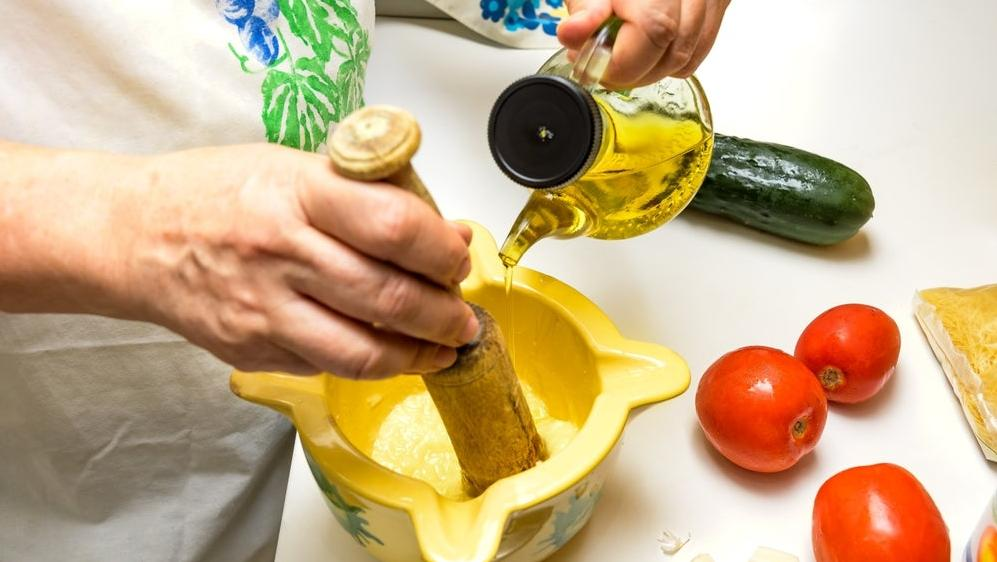Once And For All, This Is What Aioli Is
The term "aioli" is often misused. Here's what it really means.
Aioli is one of those terms that's hard to use with confidence. Everywhere you encounter aioli, it seems to be something different: you might order a dish with aioli in a restaurant and be presented with something more akin to a thick dip, while a recipe for aioli might result in something thinner, more like a salad dressing. Is this stuff just mayonnaise? Does it always have to include garlic? Who gets to pick what the term means?
What is traditional aioli?
In its purest form, aioli is a sauce made of garlic and olive oil. In fact, the name is a mashup of the words "garlic" and "oil." It's a traditional dip in Catalonia, Spain, and Provence, France. There's usually a touch of lemon juice and salt added for seasoning.
Garlic can work as an emulsifier, which means tiny droplets of olive oil can be held in a suspension in the sauce. But it's not very efficient for that purpose. It takes a lot of elbow grease to get the two to combine using a mortar and pestle, the traditional prep method. If someone makes you traditional aioli from scratch, that means they love you very much and probably have a sore arm. You can see how much work it takes in this video.
How aioli came to involve egg yolk
Egg yolks are a pretty remarkable ingredient. They contain a natural emulsifier known as lecithin, which makes emulsifying sauces so much easier. People eventually added egg yolk to the traditional garlic mash in order to more easily incorporate the olive oil in their aioli. These days, the combination of garlic, olive oil, and egg yolk is accepted as aioli, alongside the traditional two-ingredient kind.
This is where the line between aioli and mayonnaise starts getting blurred. Mayonnaise contains egg yolk that's been emulsified with oil. So they're very similar. But mayonnaise does not contain garlic by default, as aioli does, and the oil used in mayonnaise is a neutral one—not flavorful and grassy olive oil. Mayo and aioli are similar, and their attributes often overlap, but they are not the same thing.
Why is seemingly everything called aioli now?
While there's a thin line separating mayonnaise and aioli, in the 1990s the culinary world started barreling right over that line, taking their own liberties with the concept. In North America, the product was often marketed as "garlic aioli," despite the fact that it's a redundant term.
If you're old enough, you'll probably remember when aioli was suddenly everywhere on gastropub menus. Having "aioli" on a sandwich does have a more interesting ring to it than just "garlic-herb mayo." Even today when you encounter it at restaurants, it's most likely a mayonnaise that's been gussied up with extra flavor. That doesn't make it any less delicious—it's just not necessarily the aioli that someone in Catalonia would recognize.
However you define aioli, it’s delicious
Yes, aioli is a weirdly hazy category. How much you choose to adhere to semantics is really up to you. I know people who still get grouchy about aioli's transformation from a humble garlic and olive oil sauce to flavored mayonnaise. But that's just sort of the nature of food over time, isn't it? Names get blurred, ingredients get reinterpreted, and no one has to make a version they consider a bastardization. It's easy to make, and it's delicious, so how about going with the flow on this one?
